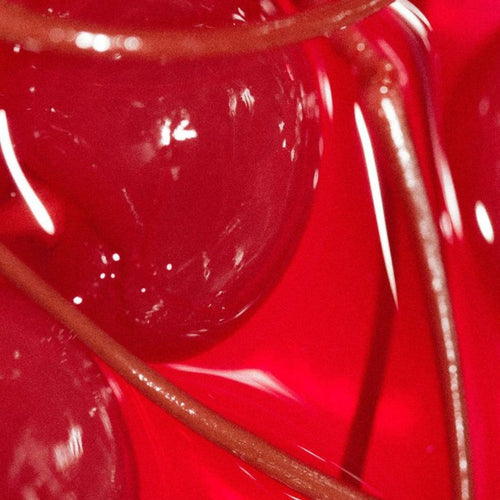They banned it from our cosmetics 35 years ago, but we were still eating it!
Yes, you read that right. Red Dye No. 3, the synthetic cherry-red colouring made from petroleum, was banned from cosmetics decades ago due to its links to cancer… yet it has remained in the foods we eat, the drinks we sip, and even some medications we swallow. But now, after years of campaigning by health advocates, the FDA has finally announced a ban on Red Dye No. 3 in food, drinks, and ingestible pharmaceuticals.
Here’s everything you need to know about this overdue decision, how it impacts you, and why it took so long.
What Is Red Dye No. 3?
Red Dye No. 3, or erythrosine, is a synthetic color additive that’s been used for decades to create a vibrant cherry-red hue in thousands of products. Think maraschino cherries, candies, cake decorations, and even some medications and supplements. It’s made from petroleum and has been a staple in the food industry despite growing concerns over its safety.
Why Was It Banned?
Back in the 1990s, Red Dye No. 3 was banned from use in cosmetics after studies linked it to cancer in laboratory animals. Yet, for reasons that defy logic, it was still deemed safe for ingestion. Fast forward to 2022, when a coalition led by the Center for Science in the Public Interest petitioned the FDA, citing more evidence of its cancer risks. The FDA has finally taken action, acknowledging that this dye poses unacceptable risks.
What Products Contain Red Dye No. 3?
While the dye’s use has been limited in Australia compared to other countries, it still pops up in:
-
Preserved cherries like maraschino, cocktail, and glacé cherries.
-
Imported confectionery including hard candies and jelly sweets.
-
Decorative cake toppings and sprinkles.
-
Some pharmaceuticals and supplements, particularly imported ones.
In Australia, strict regulations by Food Standards Australia New Zealand (FSANZ) mean erythrosine is only legally allowed in specific cherry products, but non-compliant or imported goods may still contain it. Checking labels for "Erythrosine" or "127" is a must.
Why Did It Take So Long?
It’s hard not to feel frustrated knowing that this ban comes 35 years after the dye was deemed too risky for cosmetics. The delay highlights a glaring issue in regulatory systems that prioritize industry convenience over consumer safety. But better late than never, right?
How Does This Affect You?
The FDA’s ban means that companies must remove Red Dye No. 3 from:
-
Food products by January 15, 2027.
-
Ingestible medications by January 18, 2028.
In the meantime, here’s how you can protect yourself:
-
Read Labels: Look for “Erythrosine” or the code “127” on ingredient lists.
-
Choose Natural Options: Opt for products free of artificial colors. Many Australian brands like The Natural Confectionery Co. are already committed to avoiding synthetic dyes.
-
Be Cautious with Imports: Imported goods, especially from countries with lax regulations, may still contain Red Dye No. 3.
What’s Next?
While Red Dye No. 3 is finally being phased out, this is a wake-up call to scrutinize what goes into our foods and drinks. Other artificial dyes, like Red No. 40, remain in use and are also linked to potential health concerns. Advocacy groups are pushing for broader bans and encouraging consumers to demand cleaner, safer options.
The Bottom Line
The ban on Red Dye No. 3 is a win for public health, but it’s also a reminder of how much vigilance is needed to ensure the safety of what we consume. As consumers, we hold power in our choices. Let’s use it to push for cleaner, healthier products and hold companies accountable for what they put on our plates.
Because when it comes to wellness, we deserve better than petroleum-derived additives. And now, we’re finally getting it.


